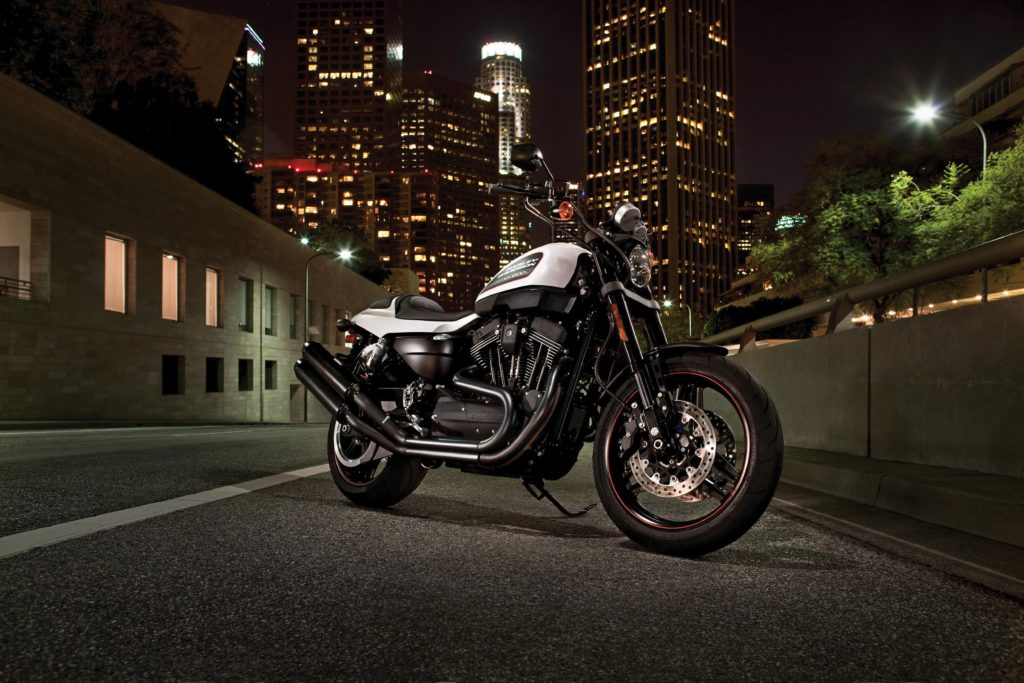
From XR to XR and 1973 to 2012, the author links Harley-Davidson’s sporty XR1200X with Honda’s legendary XR75
Words by Mitch Boehm
Photos courtesy Harley-Davidson and the Boehm archive
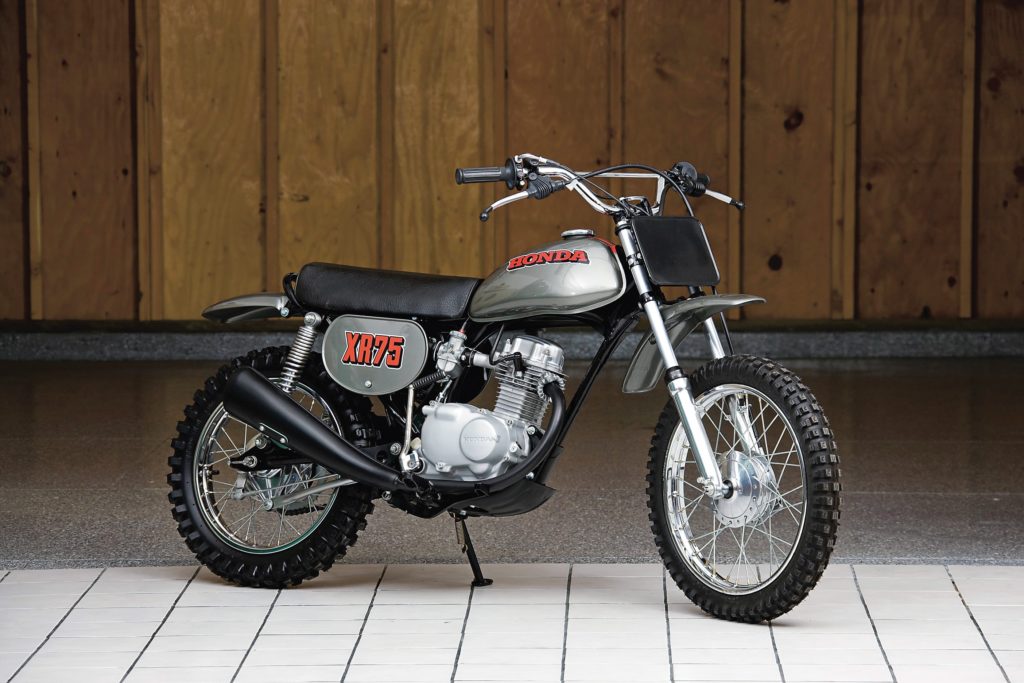
It’d been on my mind for a while. Years, actually. But it wasn’t until I started working for Thunder Press in 2019 that the idea of owning a Harley-Davidson motorcycle rumbled loudly onto my front burner.
During my many years at Motorcyclist magazine during the 1980s, 1990s and 2000s I flirted with the idea, but never could quite make the jump. Aside from loving the look of a Softail or Road King, the power, handling and fun-factor I valued over and above aesthetics – or those fourteen letters on the fuel tank – just weren’t there.
Of course, all that changed in 2009 when Harley introduced the dirttrack-styled Sportster XR1200 – and then blew that out of the water in 2011 with the upgraded XR1200X, which featured higher-end suspension, floating front rotors and blacked-out, Vader-esque aesthetics. Suddenly, there was a Harley model that offered the handling and power (OK, almost enough power) I wanted along with the aesthetics, visceral feel and history that are so much a part of the Milwaukee experience.
Although I didn’t buy one in ’11 or ’12, I did put the XR on my to-do list, and early last year ended up finding a pristine, low-mileage X – in black, of course – in Colorado. I did the 1000-mile round trip from SLC to Denver in a day in my RAM pickup to grab it, and while my dog was not happy to have been left alone for 17 hours, I smiled the entire way, especially on the way back.
The Little Grey Honda

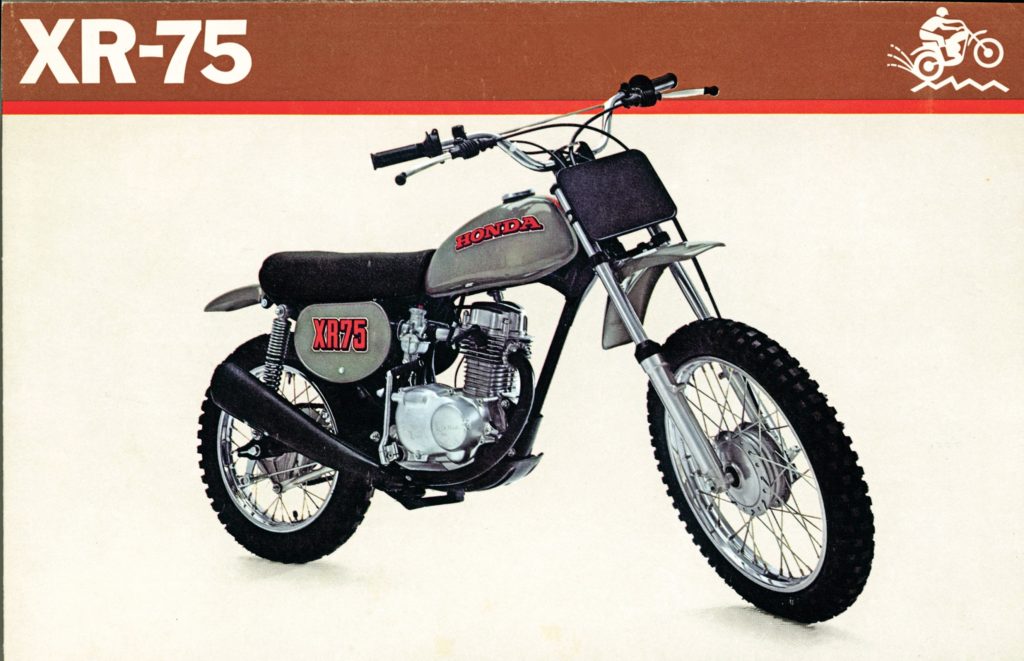
Just as The Force was strong in Luke Skywalker’s family, the XR designation has been strong in mine. It reaches back all the way to 1973, in fact, when Honda introduced the very first XR – the legendary XR75.
My first bike was not an XR, but rather a 1971 SL70. But by the time I’d gotten to the point where I could ride the snot out of the SL, the XR appeared on the scene, and my dear dad knew exactly what he needed to do. That first-generation XR was a revelation (to me, at least), with its grey Elsinore look, more power and better suspension (and way more hop-up potential) than the pretty-but-pedestrian SL.
I rode the daylights out of the thing in the woods behind our home during all of 1974, and bugged him to take me to the racetrack constantly. And at the end of the season he finally relented, hauling me to four motocross meets in northern Ohio in the fall. In the first three I did poorly on the bone-stock and worn-tired XR, finishing out of the top-10. But I learned a lot and got faster, and at the fourth meet, probably in early November at Medina, Ohio’s Smith Road Raceway, I rode pretty well and got third, and along with it a trophy, which sealed the we’re-going-racing deal for years to come.

Over the winter Dad indulged my excitement, trading normal Christmas gifts for an 85cc kit, cam, K&N filter and megaphone exhaust, which were expertly installed by a local race mechanic at a shop called Cleveland Motorcycle Supply (thanks, Dale!) and which boosted the XR’s power substantially. So much so that, in my very first race in 1975, probably in cold and wet March and again back at Smith Road, I holeshotted the opening moto and ended up getting another third-place trophy.
I even looked the part, having traded my jeans and surplus army jacket for vinyl red ‘leathers’ (honestly, vinyl!), a red nylon jersey, a proper white helmet with goggles and a JOFA mouthguard, real motocross boots and leather motocross gloves with the rubber ribbing sewn onto the outside of the fingers. A mini Marty Smith, I was.
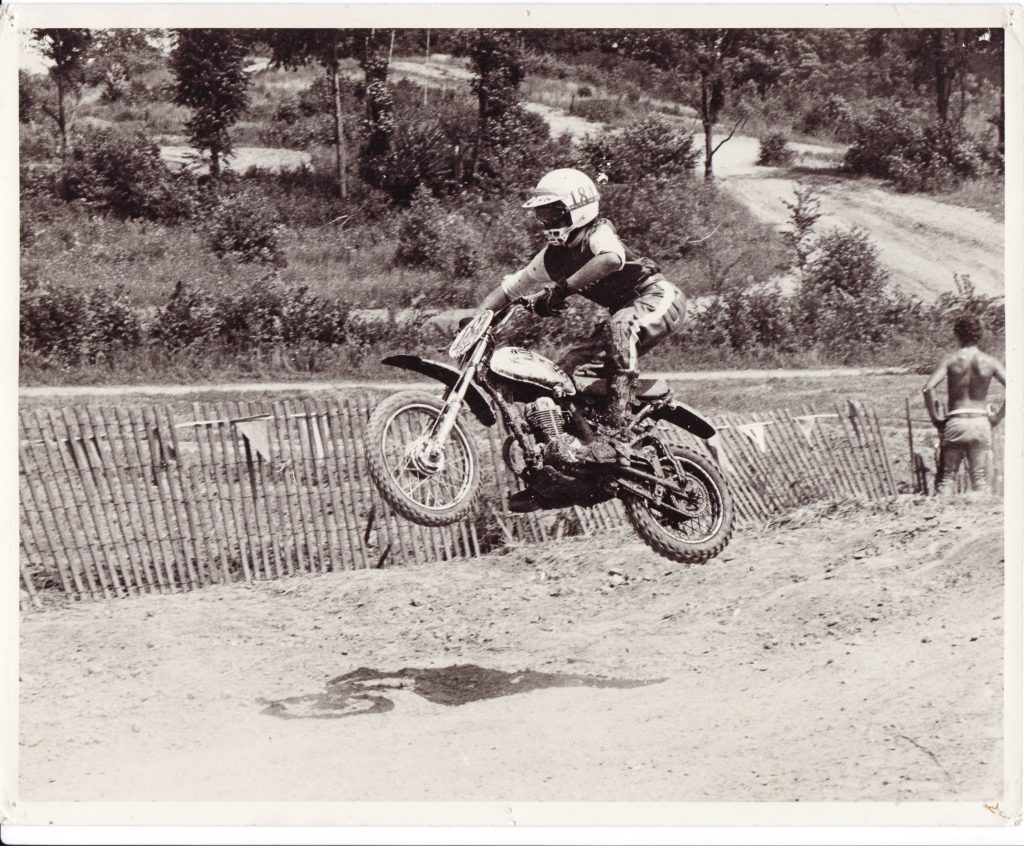
Dad and I raced that thing during all of 1975, grafting on a monoshock rear suspension after a particularly bad endo at Mid-Ohio, garnering 17 trophies during the season and even grabbing a few overall wins, the first of which was a thrill I will never forget. By the end of ’75 I’d outgrown that XR, and we’d go on to race Yamaha YZs (100s, 125s and 250s) during the next four years. But 1975 was just epic for both of us, and remains one of the best years of my life.
XR Roots
While both bikes have had a significant impact on me bookending a span of nearly 50 years, they came from very different worlds and circumstances.
The XR75 was a small part of a literal blitzkrieg-type assault on motorcycling back in the late 1960s and early 1970s by Honda Motor Company, especially in the U.S. The company had built Dreams and Benlys and, later, CBs and CLs and SLs during this period, and throughout ’71 and ’72 sales literally skyrocketed as baby boomers hit their 20s and used their spending power to good effect.
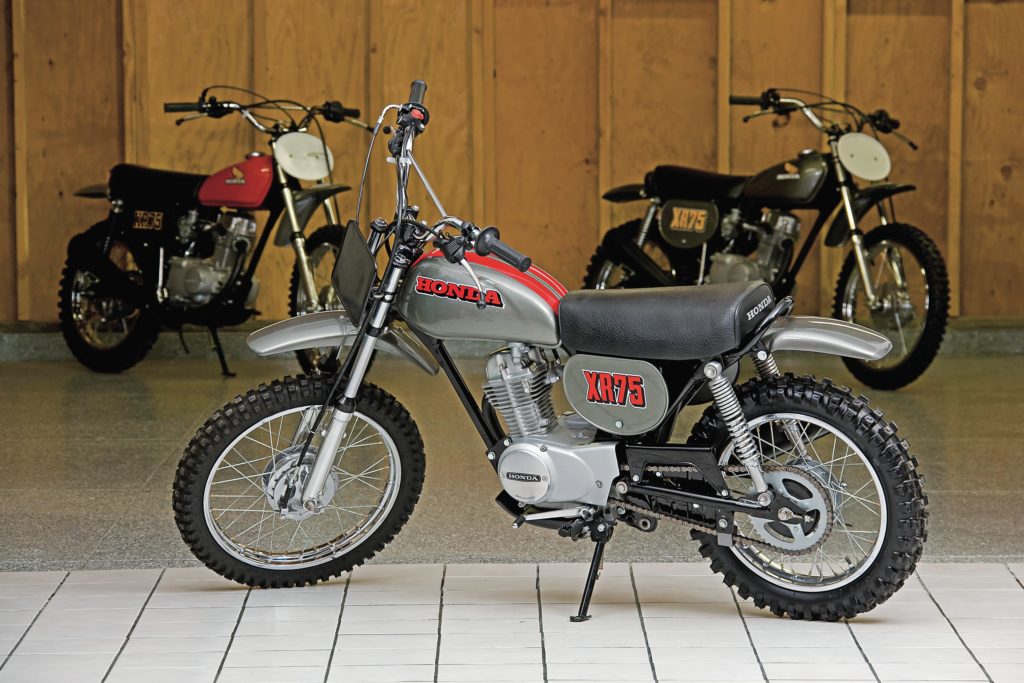
For Honda, 1973 was the year of the Elsinore – the CR250, at least, as the CR125 would appear a year later. But that substantial off-road effort also included an Elsinore for the younger set, the four-stroke XR75, whose engine came from an almost unknown little streetbike called the CB50 in Japan and Europe. (Yes, Honda built the very-cool MR50 Elsinore, but it was a cutie-pie little kid’s bike.) During 1973 and 1974, the XR became the mini to have, and it thoroughly dominated minicycle racing until the two-stroke Yamaha YZ80 eventually became the bike of choice a few years later.
For Harley-Davidson, the impetus for the XR1200 came primarily from Europe, not the U.S., which is a touch ironic given the level of desirability on both sides of the pond for a street tracker-esque machine from Milwaukee. The reason for this had a lot to do with Harley’s internal product-planning structure, and an international team whose job it was to come up with products that fit their own markets. The team felt it could wrap a higher-performance Sportster, which the European consumer was definitely asking for, with a dirt track-styled body and come up with something quite saleable…and the die was cast.
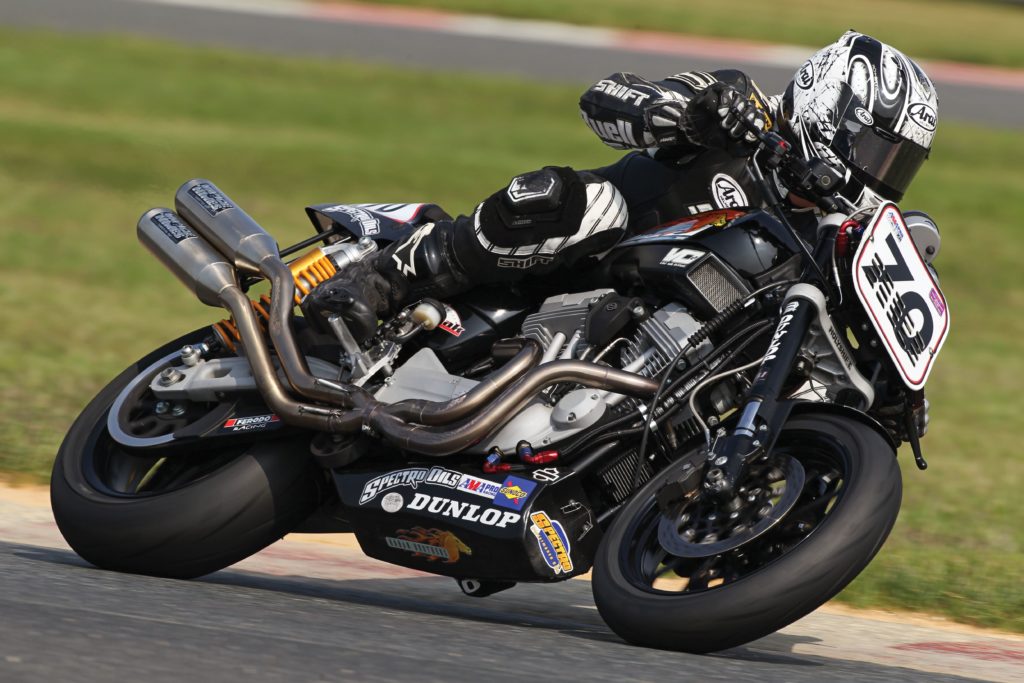
So when a prototype XR showed up in late 2006 at the Intermot show, the Euros went crazy with glee, while U.S. fans howled their displeasure. “As Harley-Davidson seeks to further grow its presence and sales in Europe,” said Harley-Davidson Europe VP John Russell at the time, “European events will be used to carefully evaluate media and public reaction to the XR1200 prototype. If the bike is well-received, we hope to bring the XR1200 to Europe in 2007.”
The bike did indeed debut in Europe and the U.K. in 2008, and then in the U.S. a year later, and to mostly stellar reviews. Road testers raved about the 20-horsepower-stronger Sportster engine (thanks to hot-rod cams, huge throttle bodies and higher compression), the XR750-esque bodywork, wide wheels with sticky rubber, above-average suspension, generous cornering clearance and stable, reassuring handling manners that allowed riders to exploit it.

It’s no fluke the XR is so capable – for a Sportster-based product, that is. Harley’s development team spent a lot of time, effort and money to make the XR as functionally excellent as possible, and it paid off. The XR benefited greatly from extensive testing at Harley’s secret Florida test track, which features lots of fast and slow corners as well as multiple asphalt conditions – which means testers were able to recreate the real world, from commuting and highway riding to high-speed backroad work. The team tried multiple geometry combinations on the way to the production bike’s 29-degree/5-inch rake and trail numbers, which ended up working extremely well.
The X – And The End
Things got even better in 2011 when Milwaukee replaced the standard-spec XR with the upgraded X model.
“Harley-Davidson caught flak when it didn’t sell [the XR1200] here,” wrote Rider magazine Editor Greg Drevenstedt back in 2010. “Inundated by angry pens and pitchforks, Harley relented and put the XR in U.S. dealerships last year. Enter the XR1200X, which now replaces the XR1200. The price has gone up by a grand, to $11,799, and the cool orange paint has gone bye-bye. But what you get is well worth the bump in price: upgraded [front and rear] suspension ($1500 in Harley’s P&A catalog), full-floating front brake rotors and a blacked-out look.”
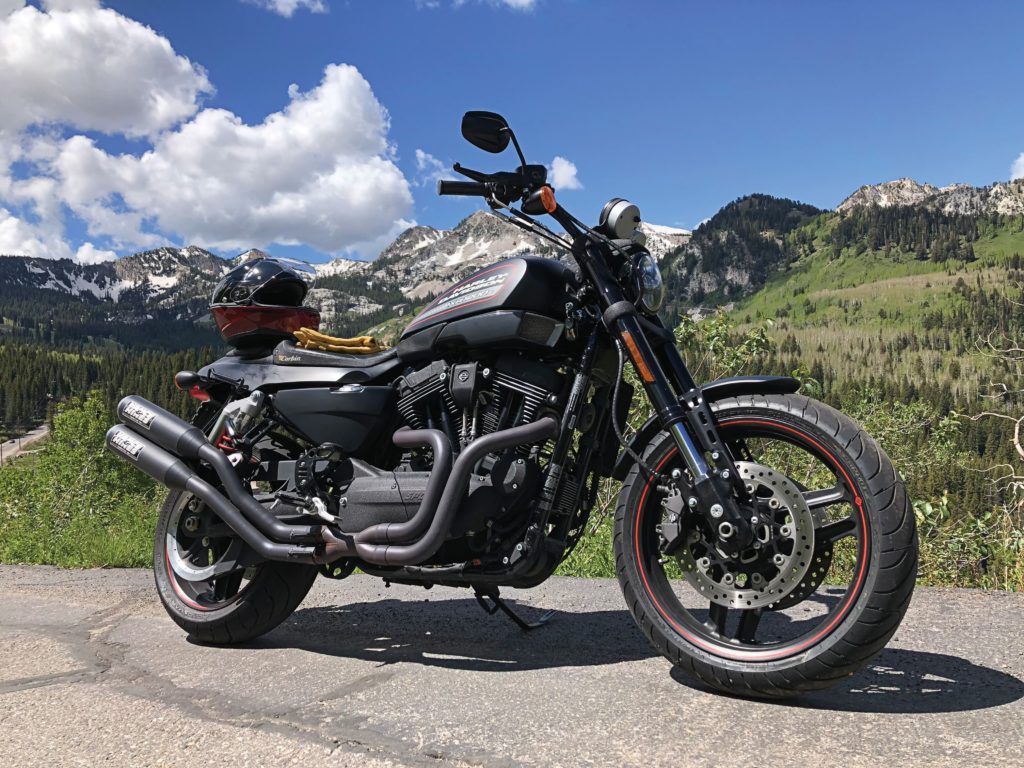
The X-model was even better, which media reports backed up enthusiastically, and that same year a spec racing class called AMA Pro Vance & Hines XR1200 Series was announced, which helped push sales and buzz.
In the end, though, it didn’t matter, as the XR project was killed off in 2013 – again somewhat ironic given all the pre- and post-release clamor by both Euro- and U.S.-based fans. The reasoning revolves primarily around the lingering effects of the 2008 financial crisis and the contraction of the large-displacement streetbike market, but also because the XR had a totally unique powertrain that had its own continuing development and emissions costs associated with it – and the number of units being sold wasn’t, on paper, at least, enough to justify those costs. In the end it was strictly a dollars and cents decision, and since motorcycle OEs need to make money to stay alive, especially ones publicly owned, that sometimes happens.

What that decision engendered, especially as we consider it with nearly a decade’s perspective, is the XR1200 becoming a true Harley-Davidson classic, a cult bike that will live on in real steel and in enthusiasts’ minds much like the XR750, XR1000 and XLCR Café Racer. It’s arguably the company’s best-ever sporting motorcycle (the race-only VR1000 notwithstanding), all while paying styling and design homage to the company’s legendary XR750. It’s also become a bit of a collector’s piece, and that’s bound to continue given the relatively small numbers sold over those few years.
Did the XR exercise get the Motor Company thinking about performance in a way it hadn’t before, and in a way that may have helped lead it to the new Pan America project – and maybe even to the Bronx and Café Racer down the road a ways? Hard to know.
All I know is that I love my Vader-esque X-model. It’s by no means a bike I’d ride to LA and back. But for shorter hops and the 2-3-hour canyon/mountain rides I typically do with my buddies here in Utah and down in So Cal, it’s just about perfect, and an absolute blast to ride. The guys I ride with are always a bit shocked at how fast the thing goes around corners, and when they bring it up I just smile.
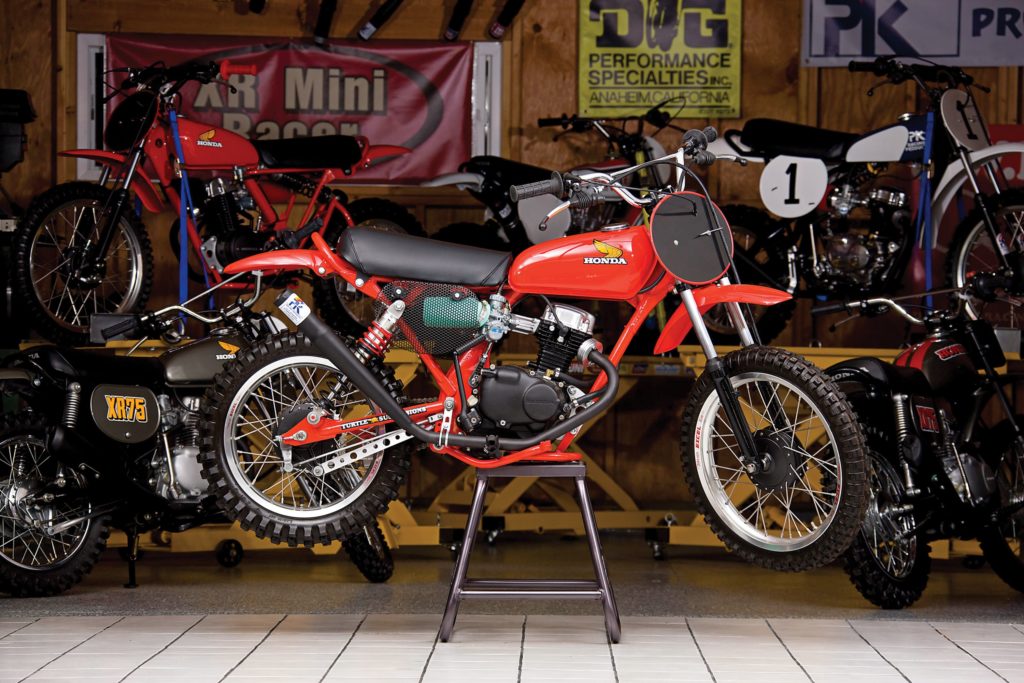
I have a very clean first-generation XR75 in my living room (along with a candy red CBX six), and I smile when I look at it, too. The XR75 wasn’t my first bike, but it very clearly changed my life.
Wooooo Hoooooo!! Aren’t motorcycles a total hoot?



















Great piece! Back in 2011, I went to the H-D dealer in Madison, WI with the intention of going home with a 2010 XR1200. I’d read some glowing reviews on the bike and I even had the cash to close the deal. But when I got there right in the main showroom entry was a gleaming, spotless 2007 XL883R with only 6,000 miles on it. It included a short backrest and shorty quick-detach windshield. There was a disturbance in the Force. The 2010 XR1200 was there, too, but for significantly more money. Still, I loved the look of it, though the upswept mufflers made it necessary to use the bespoke bags on it which held about as much as my back pockets. I test rode both bikes and was surprised at the ride, brakes, handling and performance of the 883R. And I loved the XR750-style orange, black and white livery, staggered low shotgun pipes and how much smoother the ride of the R was than the XR as well as lower and more comfy seat. I grabbed the 883R and love it to this day. Still, the XR1200 is mighty cool!